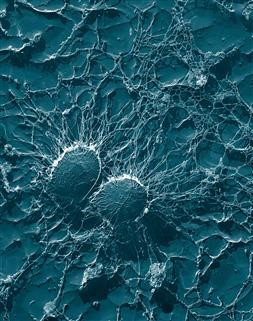The Infertility Website
Varicocele Testicular Infertility
We have the complete source for complete information and resources for Varicocele Testicular Infertility online.
5 percent of infertile men and may be controlled by medications like decongestants which contract the bladder sphincter or surgical reconstruction of the bladder neck can restore normal ejaculation. Author disclosure: No relevant financial affiliations. On Regenerating the Ovary and Generating Controversy. (PDF, 37 KB) Cell, 2005. A small incision is made in the abdomen, and a thin, flexible microscope with a light at the end, called a laparoscope, is inserted through it. Unlike women, whose fertility significantly declines after the age of 35, men’s fertility doesn’t decline until they are much older. 8,33,35,36 Lastly, in vitro fertilization, with or without intracytoplasmic sperm injection, is the mainstay of assisted reproductive technology for male factor infertility.
A 3 to 5 days long sexual abstention is absolutely necessary for this. A variety of disorders ranging from hormonal disturbances to physical problems, to psychological problems can cause male infertility. Although many treatment options are now available, in many cases treatment will not work. In many instances, male infertility is caused by testicular damage resulting in an inability of the testicle to produce sperm. Once damaged, the testicle will not usually regain its sperm-making capabilities; this aspect of male infertility is analogous to menopause (though not natural like menopause) for women and cannot usually be treated. Despite medicine�s limited ability to treat male infertility, many successful treatment options are available for its many causes. Besides testicular damage, the main causes of male infertility are low sperm production and poor sperm quality. The Causes of Male Infertility Male infertility has many causes--from hormonal imbalances, to physical problems, to psychological and/or behavioral problems. Moreover, fertility reflects a man�s �overall� health. Men who live a healthy lifestyle are more likely to produce healthy sperm. The following list highlights some lifestyle choices that negatively impact male fertility--it is not all-inclusive: · Smoking--significantly decreases both sperm count and sperm cell motility. · Prolonged use of marijuana and other recreational drugs. · Chronic alcohol abuse. · Anabolic steroid use--causes testicular shrinkage and infertility. · Overly intense exercise--produces high levels of adrenal steroid hormones which cause a testosterone deficiency resulting in infertility. · Inadequate vitamin C and Zinc in the diet. · Tight underwear--increases scrotal temperature which results in decreased sperm production. · Exposure to environmental hazards and toxins such as pesticides, lead, paint, radiation, radioactive substances, mercury, benzene, boron, and heavy metals · Malnutrition and anemia. · Excessive stress!
Even more Details Around Infertility Causes and Risk Factors

Here are Some Even more Details on Unexplained Infertility and Icsi
Diagnosis and Management of Hypogonadism, Infertility, and Impotence. (PDF, 13 MB) Chapter 22 of textbook,Male Reproductive Dysfunction, 1986. For example, 10 to 15 percent of untreated chlamydia cases will lead to pelvic inflammatory disease (PID). Genetic tests can identify specific obstacles to fertility and problems with sperm.
Here are Some Even more Info on Infertility Causes and Risk Factors
These time intervals would seem to be reversed; this is an area where public policy trumps science. Often, varicoceles or past infections such as mumps orchitis are the cause of sterility. Defects of tubules that transport sperm There are many different tubes that carry sperm. The fertilized embryo is then transferred to womb.
More Resources For Varicocele Testicular Infertility
Over the past three decades, huge advancements in fertility science have helped millions of couples to overcome their difficulties and have children of their own. These are agents that support the follicular maturation and the secretion of gonadotropins. Luttjeboer F, Harada T, Hughes E, Johnson N, Lilford R, Mol BW. Apparently there are only 0,014% of them (this could be an explanation of why they were not discovered until now). Showell MG, Brown J, Yazdani A, Stankiewicz MT, Hart RJ. Intrauterine insemination. For this procedure, after semen gets rinsed with a special solution, a doctor places it into your uterus when you're ovulating.
Previous Next
See also
Infertility Trials Uk
Xylitol Infertility
Process of Infertility